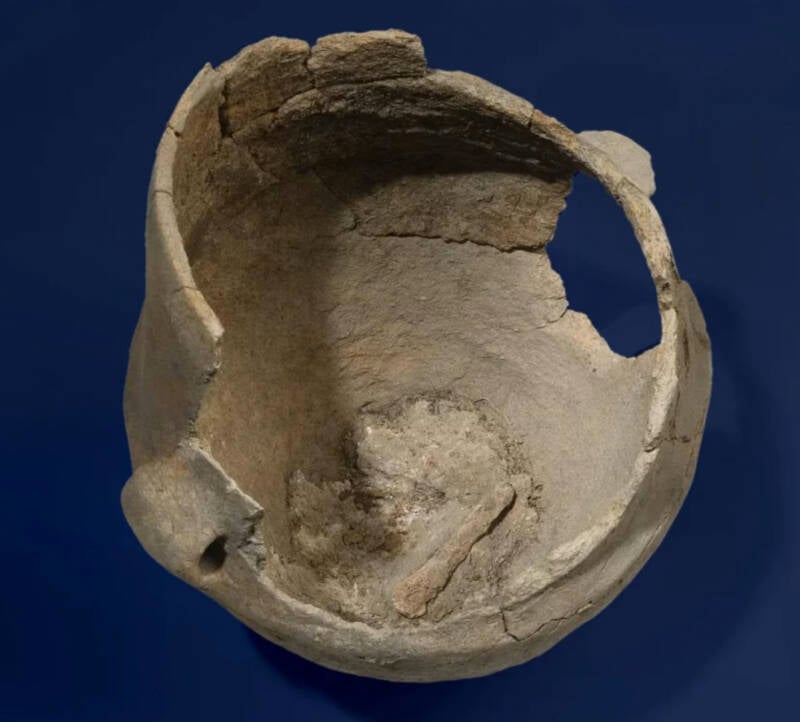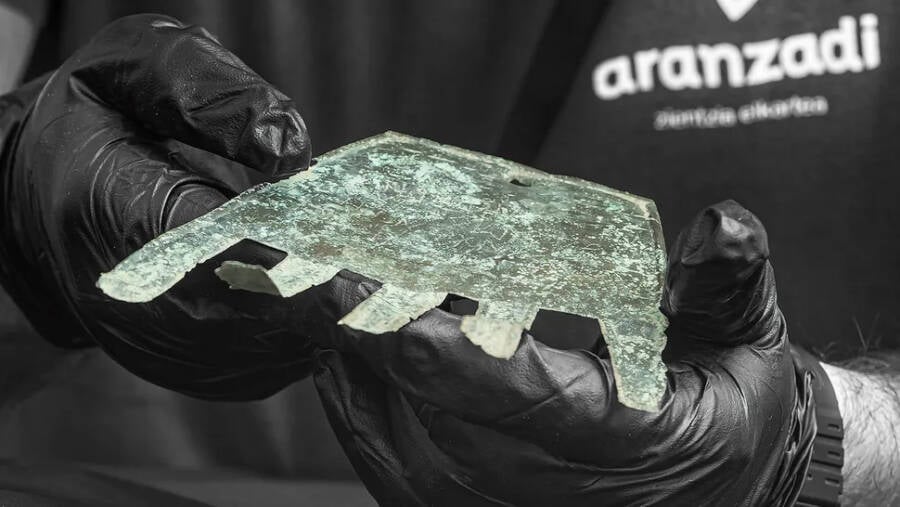Porridge-covered Stone Age pot unearthed in Germany, colonial armor discovered in Maryland, ancient bronze hand inscribed with mysterious writing found in Spain.
5,000-Year-Old Porridge Found On A Clay Pot Unearthed At A Stone Age Settlement In Germany

Sara Jagiolla/Kiel UniversityThe pot was unearthed at the Neolithic settlement Oldenburg LA 77 in Ostholstein, Schleswig-Holstein.
Archaeologists in Germany have uncovered a Stone Age cooking pot flecked with remains of 5,000-year-old porridge. A surprisingly sophisticated dish, the porridge was made of barley, white goosefoot seeds, and emmer wheat that had been sprouted to bring out its distinctly sweet and nutty flavor.
Though this was a carefully prepared dish, the cook mistakenly left it over the fire for too long, burning the dish and scorching the pot. Archaeologists suspect that, after burning the porridge and scorching the pot, the cook may have just broken the clay vessel rather than try to clean it.
Learn more about this incredible find here.
Rare Piece Of Metal Armor Unearthed At 17th-Century Colonial Fort In Maryland

Historic St. Mary’s CommissionThe metal tasset is just the latest incredible discovery at Historic St. Mary’s City.
When colonists came to the New World hundreds of years ago, they brought supplies to help them survive — including weapons of war like metal suits of armor. Now, excavations at a 17th-century colonial fort in Maryland have unearthed one such piece of body armor.
The metal tasset found at Historic St. Mary’s City late last year is a remarkable discovery, but it’s just the latest fascinating object to be unearthed at the fort.
Dig deeper in this report.
2,100-Year-Old Bronze Hand Found In Spain Is Inscribed With A Mysterious Ancient Language

Aiestaran, M. et. al/Antiquity Publications Researchers examine the bronze amulet, which bears mysterious Vasconic inscriptions.
In 2021, researchers were excavating an ancient settlement in Spain’s Navarre region when they discovered a bronze amulet shaped like a hand. Now, they believe it bears the oldest known inscription written in a Vasconic language.
Vasconic, an ancient language group spoken primarily by the pre-Roman Vascones people near the Pyrenees mountains, has long been a mystery for linguists. Examples of the language group are scarce — only a few inscriptions on ancient coins and altar stones have ever been found.
Read on here.





